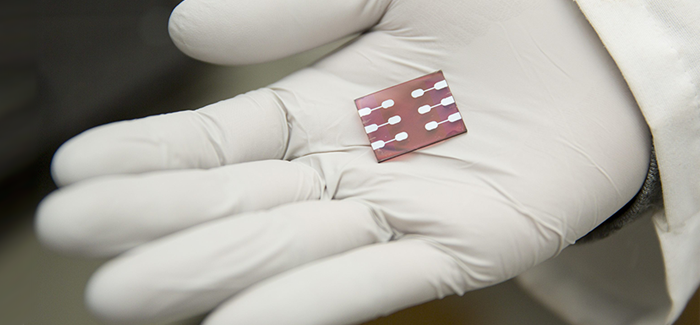
(Photography by Andrew Nelles)
Chemists find a key to improving solar cell efficiency.
Researchers from UChicago and Argonne National Laboratory have identified a new polymer that appears to be a key to generating solar energy more efficiently. Luping Yu, a chemistry professor and fellow in the Institute for Molecular Engineering, led a team that reported its breakthrough in the September Nature Photonics.
The researchers’ secret is PID2, a polymer they developed that improves efficiency in polymer solar cells by both transporting charges more easily and increasing the absorption of light. The team used the high-brilliance X-ray beam at Argonne’s Advanced Photon Source to study the structure of polymers in solar cells. When PID2 was added, the polymers formed fibers—pathways that allow electrons to travel quickly between electrodes on different sides of the cell. “It’s like you’re generating a street,” Yu explains, “and somebody that’s traveling along the street can find a way to go from this end to the other.”
After determining the optimal amount of PID2 to add to a standard mixture of a polymer and the carbon molecule fullerene, the researchers achieved an efficiency of 8.2 percent, the best ever for such solar cells. “Basically, in polymer solar cells we have a polymer as electron donor and fullerene as electron acceptor to allow charge separation,” says Luyao Lu, SM’11, a chemistry grad student and the lead author of the Nature Photonics paper.
The team is now looking for ways to reach the 10 percent efficiency benchmark necessary to make polymer solar cells commercially viable.
